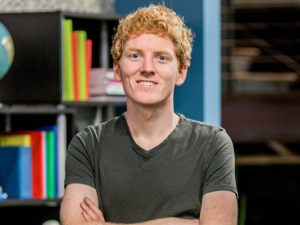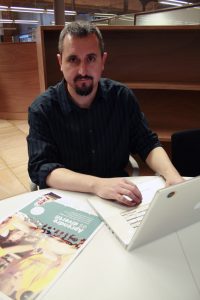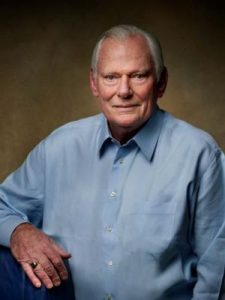Patrick Collison : Co-founder of Stripe & the Youngest Self-made Billionaire
Learning has nothing to do with the age, whether you are 8 or 80, if you are learning some good stuff, it is going to pay you off in some unusual way. Like Patrick Collision’s interest in computer programming, that he grew at a tender age, led him to become the youngest self-made billionaire. He established one of the leading software companies, at an age when most of the people are still in high school or attending the college.
Early Life
Patrick Collison was born on 9 September 1988, to Lily and Denis Collison, in Dromineer, County Tipperary. He is the eldest of his two brothers John Collison and Tommy Collison. He was just eight when he started learning computers at the University of Limerick. His interest in computers, later, led him to study programming languages at the age of ten.

At the age of fifteen, Collison took part in the 40th Young Scientist and Technology Exhibition, where he won the runner-up’s trophy for his project on artificial intelligence named after his idol Issac Newton. The very next year, on 14 January 2005, he again participated in the same competition and won the first prize, for a project on a LISP-type programming language. He was awarded a €3,000 cheque and a trophy of Waterford Crystal presented by President Mary McAleese.
Collison completed his high school education from Gaelscoil Aonach Urmhumhan, Tipperary, Ireland. Later, he joined the Castletroy College in Castletroy, County Limerick.
Career
After graduating from Castletroy College, Collison entered the Massachusetts Institute of Technology, from where he soon dropped out to co-found a software company named ‘Shuppa’, with his younger brother John. As they could not raise funding for the company in Ireland, the two approached a few investors from the Silicon Valley and moved to California after Y Combinator showed interest in the start-up.
The two joined hands with other two Oxford graduates, Harjeet and Kulveer Taggar, and merged the company into Automatic.
In March 2008, at the age of 19, Collison sold the company to a Canadian company named Live Current Media, and both the brothers became millionaires overnight. In the month of May, in the same year, Collison accepted the position of director of engineering in the company’s Vancouver branch.
Founding Stripe
While in high school, Collison and his brother started building iOS apps. During this time Collision discovered that it is much easier to earn money through those apps, rather charge for things online and get the payment. This brought an idea of the development of a payment app into Collison’s mind, and after getting inspired by the working model of virtual hosting provider Slicehost, he built a prototype of his payment app.
In 2010, the Collison brothers built and released the first version of the app named as dev/payments, which later was renamed to Stripe. Initially, they tested the app with their friends and collected the feedback from them. Soon, people started talking about the app and Collison had a long waiting list for the app users. In the same year, the Stripe managed to receive a seed funding from Y Combinator. In the following year, it also received funding from venture capitalists Peter Thiel, Sequoia Capital, and Andreessen Horowitz, worth $2 million. Again in 2012, Stripe was funded with an $18 million Series A investment led by Sequoia Capital at a $100 million valuation.
Till September 2011, Stripe was running on an extensive beta. At the time the company became public and received a $20 million Series B investment.
Personal Life
Currently, Collison is working as the CEO of Stripe and lives in San Francisco, California. In November 2016, the Collison brothers became the world’s youngest self-made billionaires. The two were also featured on a young Irish person’s rich list aired on an RTÉ television in the Christmass edition 2008.

Yashica is a Software Engineer turned Content Writer, who loves to write on social causes and expertise in writing technical stuff. She loves to watch movies and explore new places. She believes that you need to live once before you die. So experimenting with her life and career choices, she is trying to live her life to the fullest.



